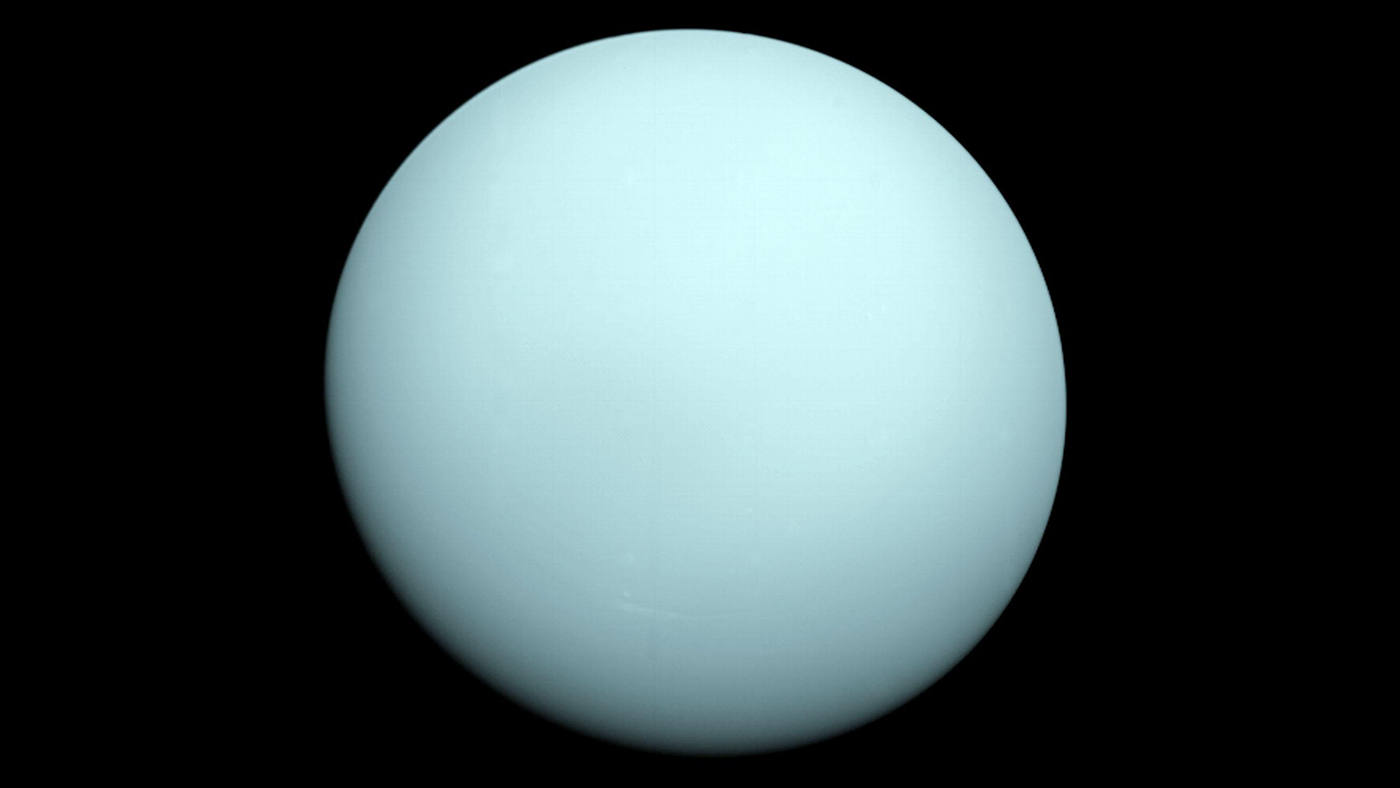Even after decades of observations and a visit by NASA’s Voyager 2 spacecraft, Uranus held on to one critical secret — the composition of its clouds. Now, one of the key components of the planet’s clouds has finally been verified.
A global research team that includes Glenn Orton of NASA’s Jet Propulsion Laboratory in Pasadena, California, has spectroscopically dissected the infrared light from Uranus captured by the 26.25-foot (8-meter) Gemini North telescope on Hawaii’s Mauna Kea. They found hydrogen sulfide, the odiferous gas that most people avoid, in Uranus’ cloud tops. The long-sought evidence was published in the April 23rd issue of the journal Nature Astronomy.
The detection of hydrogen sulfide high in Uranus’ cloud deck (and presumably Neptune’s) is a striking difference from the gas giant planets located closer to the Sun — Jupiter and Saturn — where ammonia is observed above the clouds, but no hydrogen sulfide. These differences in atmospheric composition shed light on questions about the planets’ formation and history.
“We’ve strongly suspected that hydrogen sulfide gas was influencing the millimeter and radio spectrum of Uranus for some time, but we were unable to attribute the absorption needed to identify it positively. Now, that part of the puzzle is falling into place as well,” Orton said.
The Gemini data, obtained with the Near-Infrared Integral Field Spectrometer (NIFS), sampled reflected sunlight from a region immediately above the main visible cloud layer in Uranus’ atmosphere.
“While the lines we were trying to detect were just barely there, we were able to detect them unambiguously thanks to the sensitivity of NIFS on Gemini, combined with the exquisite conditions on Mauna Kea,” said lead author Patrick Irwin of the University of Oxford, U.K.
No worries, though, that the odor of hydrogen sulfide would overtake human senses. According to Irwin, “Suffocation and exposure in the negative 200 degrees Celsius [minus 328 degrees Fahrenheit] atmosphere made of mostly hydrogen, helium and methane would take its toll long before the smell.”
Read more on the news of Uranus’ atmosphere from Gemini Observatory here.
Caltech in Pasadena, California, manages JPL for NASA.
Updated at 8:45 a.m. PT on April 27, 2018, to correct the conversion in paragraph 7.
Gretchen McCartney
Jet Propulsion Laboratory, Pasadena, Calif.
818-393-6215
Gretchen.p.mccartney@jpl.nasa.gov
JoAnna Wendel
NASA Headquarters, Washington
202-358-1003
joanna.r.wendel@nasa.gov
Peter Michaud
Gemini Observatory, Hilo, Hawaii
808-974-2510
pmichaud@gemini.edu
2018-079























